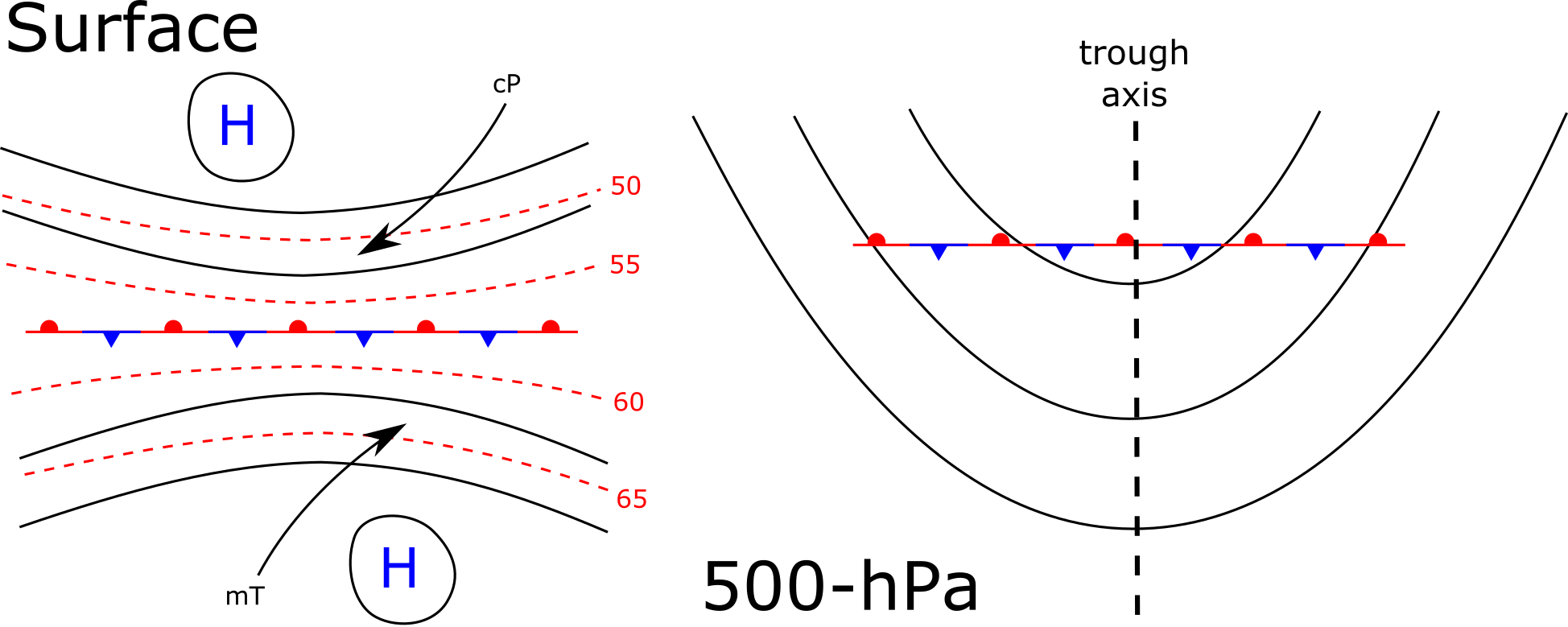15.3. Pre-Environment Stage#
Most cyclones form over an area that has at least some kind of surface temperature gradient. As you will learn about later in your meteorology coursework, a surface temperature gradient is not absolutely needed to form a cyclone. However, cyclones will preferentially form over regions that have some weak temperature gradient, as it is easier for the atmosphere to concentrate a weak temperature gradient rather than forming a temperature gradient where there was none.
The pre-environment stage is defined by a weak temperature gradient (if one exists at all), where there may or may not be defined a stationary boundary (Fig. 15.1). In general, there is little temperature advection near the surface and only a small depression of lower pressure. In general, there is also a moisture gradient between the two different airmasses. In the Northern Hemisphere to the north is the dry continental airmass and to the south the moist tropical airmass.
Associated with the temperature gradient at the surface there is a need for an upper-level trough to initiate the cyclogenesis stage (Fig. 15.1). This additional requirement differs from the classic Norwegian Cyclone Model (NCM) because of now having upper-level observations. The upper-level trough will initiate appropriate divergence and subsequent rising motion to the east of the trough axis. This will eventually result in less mass within the column, which will mean the surface pressure will decrease, initiating our mid-latitude cyclone.

Fig. 15.1 A schematic diagram of the pre-environmental conditions over the region where cyclogenesis will take place at the surface and 500 hPa with location of low-level fronts for spatial reference.#
